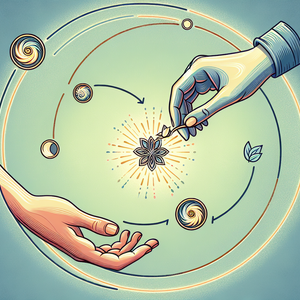The Future of Caregiving Jobs in an AI-Driven World

Caregiving is an essential profession that profoundly impacts millions of lives worldwide. It encompasses roles such as home health aides, personal care workers, and nursing assistants, who provide support to individuals with disabilities, chronic illnesses, or aging-related challenges. Caregivers assist with day-to-day tasks, including bathing, dressing, and meal preparation, while also offering emotional support and companionship. The demand for caregiving services is projected to grow significantly in the coming decades, driven by aging populations and increased life expectancies. According to the U.S. Bureau of Labor Statistics, employment for home health and personal care aides is expected to grow by 25% between 2021 and 2031, a rate much faster than the average for other occupations. Similar trends are evident worldwide, particularly in countries like Japan, Germany, and Italy, where aging populations are outpacing the availability of caregivers. Despite this growing demand, the caregiving profession faces numerous challenges. It is often physically and emotionally demanding, underpaid, and prone to high turnover rates. Many caregivers experience burnout due to long hours and limited support, while governments and organizations struggle to fill caregiving roles at the scale required. This labor shortage has spurred the exploration of AI and robotics as potential solutions, raising questions about how technology could transform caregiving.
The Role of AI and Robotics in Caregiving
AI and robotics are already making inroads into the caregiving industry, offering innovative tools to support both caregivers and patients. Robotic systems like Japan’s "Robear" can lift and transfer patients, reducing the physical strain on human caregivers. AI-driven monitoring systems are being used to track patients’ health, detect falls, and alert caregivers to potential emergencies, enabling more effective and responsive care. Virtual assistants like ElliQ offer companionship and help elderly individuals manage medication schedules, while machine learning algorithms analyze patient data to identify health risks and recommend interventions. The potential benefits of these technologies are substantial. AI can enhance caregiving by improving efficiency, accuracy, and accessibility. For example, in regions facing severe caregiver shortages, robots and virtual assistants can fill gaps in basic care. Automation can also help caregivers handle repetitive or physically demanding tasks, freeing up time for more meaningful interactions with patients. Additionally, AI-powered tools can streamline administrative work, such as scheduling and record-keeping, allowing caregivers to focus on their core responsibilities. However, these advancements come with limitations. While AI excels at tasks requiring precision and data analysis, it lacks the emotional intelligence, cultural sensitivity, and empathy that make caregiving a deeply human profession. A robot may be able to lift a patient out of bed, but it cannot offer the comforting presence of a caregiver during a moment of distress. This raises a key question: Can technology ever replicate the human qualities that define caregiving?
Why Human Empathy Remains Irreplaceable
At its heart, caregiving is about more than just completing tasks—it is about building trust, forming relationships, and providing emotional support. These elements are rooted in qualities that machines cannot replicate, such as empathy, adaptability, and the ability to respond to non-verbal cues. Consider the challenges of caring for dementia patients, who may experience confusion, agitation, or fear. A human caregiver can calm these patients with a reassuring voice, gentle touch, or shared memory. These deeply personal moments require an understanding of the patient’s unique personality, history, and emotional state—an understanding that no machine can achieve. Furthermore, cultural and societal attitudes toward caregiving play a significant role in its future. In many cultures, caregiving is viewed as a deeply personal and familial responsibility, and the idea of replacing this role with machines may face resistance. Surveys consistently show that people prefer human caregivers over robotic alternatives, citing trust and emotional connection as key factors. Ultimately, while AI can assist with certain aspects of caregiving, it cannot replace the human touch. The ability to empathize, connect, and provide comfort in times of vulnerability remains an inherently human skill.
A Hybrid Future: Collaboration Between Humans and Machines
Rather than replacing human caregivers, AI and robotics are more likely to complement their work, creating a hybrid caregiving model. In this scenario, machines handle repetitive, routine, or physically demanding tasks, while human caregivers focus on providing emotional support, companionship, and personalized care. For example, robotic assistants could take over tasks such as lifting patients, delivering meals, or administering medications. This would reduce the risk of injury for caregivers and allow them to spend more time engaging with patients and addressing their emotional needs. AI-powered systems could also assist caregivers by monitoring patients’ health, providing real-time data, and predicting potential medical issues, enabling more proactive care. This hybrid approach would not only enhance the quality of care but also redefine caregiving roles. Caregivers may need to develop new skills, such as operating and troubleshooting advanced technologies, effectively merging traditional caregiving expertise with technical proficiency. This shift has the potential to elevate the profession, offering opportunities for specialized training and higher wages. To prepare for this future, governments, educational institutions, and healthcare organizations must invest in workforce development and training programs. Policies must also be put in place to ensure that AI and robotics are used ethically, prioritizing patient dignity, autonomy, and well-being.
The future of caregiving jobs in an AI-driven world is both complex and promising. While advancements in AI and robotics offer exciting possibilities for addressing labor shortages and improving efficiency, they cannot replace the human qualities that define caregiving. Empathy, emotional intelligence, and personal connection remain irreplaceable elements of the profession. As we move forward, the caregiving industry will likely evolve into a collaborative space where humans and machines work together to meet the growing demand for care. By embracing this hybrid model, society can harness the strengths of both AI and human caregivers, ensuring that caregiving continues to offer not only practical assistance but also the compassion and connection that make it so impactful. In this delicate balance between human and machine, the caregiving profession has the opportunity to transform—while staying true to its deeply human essence.
AI Integration Specialist for Healthcare and Caregiving
Hospitals, elder care facilities, AI companies specializing in healthcare (e.g., Philips, GE Healthcare)
Responsibilities
Oversee the implementation of AI-powered tools (e.g., health monitoring systems, predictive analytics) in caregiving facilities.
Train caregiving staff on the effective use of AI and robotic systems for patient care and administrative tasks.
Collaborate with healthcare providers to customize AI systems based on patient needs and organizational goals.
Skills/Qualifications
Strong background in healthcare technology or IT, with knowledge of AI tools like machine learning algorithms or robotic systems.
Experience in managing technology adoption in medical or caregiving settings.
Familiarity with patient privacy regulations (e.g., HIPAA).
Robotic Care Assistant Programmer
Robotics companies (e.g., SoftBank Robotics, Toyota Industries), elder care facilities integrating robotics
Responsibilities
Develop and maintain robotic systems designed for caregiving tasks, such as patient lifting, mobility assistance, and medication delivery.
Program robots to adapt to specific caregiving environments and patient needs.
Conduct regular testing and updates to ensure robots meet safety and usability standards.
Skills/Qualifications
Proficiency in programming languages like Python or C++ used in robotics and AI development.
Knowledge of healthcare robotics (e.g., exoskeletons, assistive robots like Robear).
Problem-solving and troubleshooting skills for real-world caregiving scenarios.
Human-Machine Collaboration Trainer
Healthcare organizations, training consultancies, government-funded caregiving programs
Responsibilities
Train caregiving staff to effectively collaborate with AI tools and robotic systems in hybrid care environments.
Develop training materials that blend traditional caregiving skills with technological proficiency.
Educate caregivers on ethical considerations, focusing on preserving patient dignity and autonomy while using AI.
Skills/Qualifications
Background in caregiving, nursing, or healthcare management, combined with knowledge of AI systems.
Strong interpersonal and teaching skills to work with diverse caregiver teams.
Understanding of patient-centered care principles and AI ethics.
Gerontechnologist (Specialist in Aging and Technology)
Research institutions, elder care startups, healthcare tech firms (e.g., Tunstall Healthcare, Vayyar)
Responsibilities
Design and implement technology solutions tailored to aging populations, such as wearable health monitors or virtual companions.
Work closely with caregivers and healthcare providers to integrate these technologies into daily care routines.
Monitor the effectiveness of technology solutions and suggest improvements based on user feedback.
Skills/Qualifications
Expertise in gerontology and familiarity with assistive technology for eldercare.
Knowledge of usability testing and user-centered design for older adults.
Strong analytical skills to assess the impact of technology on patient outcomes.
Ethical AI Policy Advisor for Healthcare
Government agencies, healthcare organizations, tech companies focusing on AI ethics (e.g., IBM AI Ethics, Microsoft Responsible AI)
Responsibilities
Develop guidelines and frameworks for the ethical use of AI in caregiving, ensuring patient rights and well-being are prioritized.
Conduct risk assessments for AI tools to address potential ethical, legal, and privacy concerns.
Collaborate with government agencies and healthcare providers to shape policy and compliance standards.
Skills/Qualifications
Advanced knowledge of healthcare policies and AI ethics, particularly in caregiving contexts.
Experience in legal compliance, such as GDPR or HIPAA, related to patient data.
Strong communication skills for stakeholder engagement and policy advocacy.


